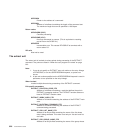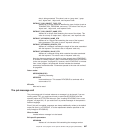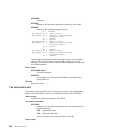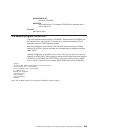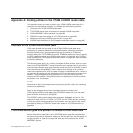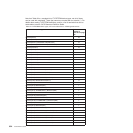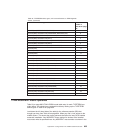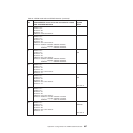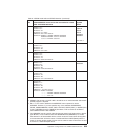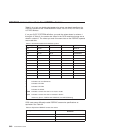
Appendix A. Coding entries in the VTAM LOGON mode table
This appendix shows you what to code in your VTAM LOGON mode table for a
terminal to be automatically installed. It is divided into the following sections:
1. “Overview of the VTAM LOGON mode table”
2. “TYPETERM device types and pointers to related LOGON mode data”
3. “VTAM MODEENT macro operands” on page 835
4. “PSERVIC screen size values for LUTYPEx devices” on page 840
5. “Matching models and LOGON mode entries” on page 841
6. “LOGON mode definitions for CICS-supplied autoinstall models” on page 850.
Overview of the VTAM LOGON mode table
CICS uses the data that you code in your VTAM LOGON mode table when
processing an automatic installation (autoinstall) request. Automatic installation
functions properly only if the logmode entries that you define to VTAM have
matches among the TYPETERMs and model TERMINAL definitions that you specify
to CICS. “Matching models and LOGON mode entries” on page 841 and “LOGON
mode definitions for CICS-supplied autoinstall models” on page 850 show examples
of matching definitions.
The following tables show, for a variety of possible terminal devices, what you must
code on the VTAM MODEENT macros that define your logmode table if you want to
use autoinstall. Between them they show the values that must be specified for each
of the operands of the MODEENT macro. Where all bit settings of an operand’s
value have significance for CICS, the data is shown in hexadecimal form. If some of
an operand’s bit settings are not significant to CICS, its data bytes are shown as bit
patterns. The bit settings that have significance for CICS are shown set to the
values that CICS expects. Those bits that have no significance to CICS are shown
as periods. Thus, for example:
01..0011
shows that six bits in the subject byte must be given specific values; the remaining
two have no significance.
Some of the examples shown here correspond exactly to entries in the
CICS-supplied LOGON mode table called ISTINCLM. Where this is so, the table
gives the name of the entry in ISTINCLM.
The PSERVIC setting shows fields called aaaaaaaa, bbbbbbbb, and so on. The
contents of these vary for LUTYPE0, LUTYPE2, and LUTYPE3 devices, according
to how you specify certain attributes of the terminals. You can work out the values
you need by looking at “PSERVIC screen size values for LUTYPEx devices” on
page 840.
TYPETERM device types and pointers to related LOGON mode data
Search Table 49 on page 834 for the TYPETERM device type that corresponds to
the terminal you want to autoinstall. When you find the right one, use the number to
its right to locate, in Table 50 on page 836, what has to be coded on the VTAM
MODEENT macros.
© Copyright IBM Corp. 1977, 2011 833




